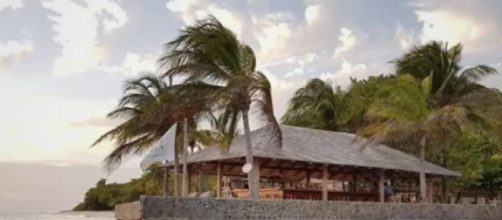CNN reports that in the opinion of an official, the La Soufrière volcano in St Vincent "continues to show periods of explosive activity." She is Dr. Erouscilla Joseph, director of a seismic research Centre. The intensity of the third explosion was lesser compared to earlier two. The research center is monitoring the activity of the volcano along with the local authorities. It seems the residents woke up Saturday morning and witnessed heavy deposits of ash and strong smell of sulfur in the atmosphere. The St. Vincent and the Grenadines National Emergency Management Organization (NEMO) was monitoring the volcano.
This is a natural happening and while there are instruments that can predict tremors, they cannot pinpoint the exact location of where the volcano will erupt. However, those who reside in the region might get some advance indications from the underground rumblings.
CNN quotes NEMO saying: "Be careful all. We are covered in ash and strong sulfur scents pervade the air." It cautioned people who have respiratory problems to take necessary precautions in order to remain safe and healthy. Experts believe the explosive eruptions could continue for some more time. They are unable to assign any time frame. After the first eruption, the plume of ash rose to a height of nearly 20,000 feet into the sky.
Last eruption of the La Soufrière volcano was in April 1979
NEMO confirms the last time the La Soufrière volcano erupted was in April 1979. It is interesting that in 1979, it erupted on the second Friday in April. The latest eruption was also on the second Friday in April 2021. CNN adds the location of La Soufrière is on the largest island of the St.
Vincent and the Grenadines chain. The intensity of the second explosion was lesser compared to the first. NEMO is keeping track of the volcano. Prime Minister Ralph Gonsalves declared a disaster alert because of the volcano's eruptive activity. In addition, the island was on red alert. It meant an eruption was "imminent now." The authorities issued evacuation orders for people of some districts.
Visibility was poor and Travel was risky. Moreover, the gaseous substances in the air could lead to health issues for some. In July 2018, The Kilauea volcano hurled a lava ball that struck a tourist boat in Hawaii and injured some of them.
Volcano erupts in St. Vincent Island in the Caribbean
According to the BBC, the La Soufrière volcano was dormant for decades and began to announce its presence in December. The volcanic activity has gradually increased this week. A blanket of ash and smoke has engulfed the island and has forced thousands of people to move out of their homes. Prime Minister Ralph Gonsalves urged residents in danger zones to evacuate. Cruise ships undertook the movement of evacuees to safer locations.
The dark ash plumes rose to a height of nearly 3.7 miles into the air. The ash has moved to the Argyle International Airport, which is around 12.4 miles away.
Poor visibility due to the ash from the volcano
Out of the total population, nearly 10 percent live in the red zone. The BBC reports that the intention of the evacuation was to move people from danger zones to safer areas. NEMO took to a social media platform to inform people to be careful of the heavy ash fall. It said - "Be sure to get rid of or clean up the ash, soon after it falls. If rain falls, the ash could harden and pose a danger to you." Most of the Lesser Antilles islands are part of a long volcanic arc in the Eastern Caribbean and the last eruption of 1979 resulted in damages worth more than $100m. The worst eruption on record was in 1902 and it took more than 1,000 lives.


